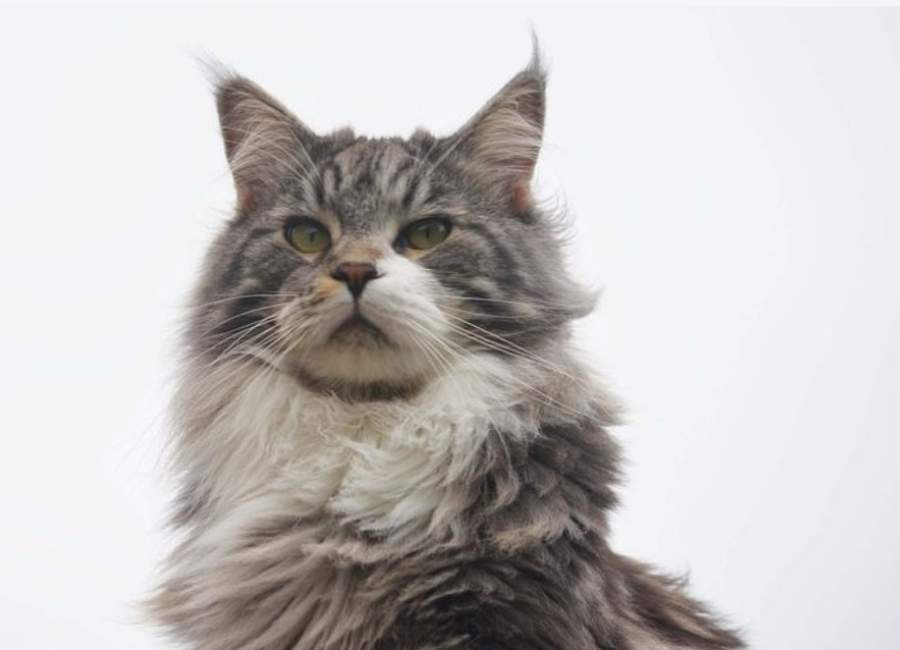10 Causes of Long Hair Cats Shedding & Tips

Let’s break down the causes of long hair cats shedding…
Are you tired of constantly finding your long hair cat’s fur all over your clothes and furniture?
Or are you considering adopting a long hair cat but worried about the potential shedding?
In this post, we’ll dive into the world of long hair cat shedding and explore some practical solutions to keep shedding at bay while still enjoying the fluffy beauty of your feline friend.
Causes Of Long Hair Cats Shedding
The following are some of the most common causes of excessive shedding in long hair cats:
1. Seasonality
As they adapt to variations in temperature and light, many long-haired cats shed more in the spring and fall.
This kind of shedding is typical and typically goes away by itself as the season changes.
During these seasons, regular grooming can help remove extra fur and minimize shedding.
2. Over-grooming
Some long hair cats may overgroom, which causes an excessive amount of shedding.
Anxiety, stress, or other behavioral problems may be to blame for this kind of over-grooming.
Try to find the source of your long hair cat’s excessive grooming so you may address it and lower their stress levels.
Giving your long cat lots of playthings and activities to engage in might also help them feel less stressed.
3. Poor nutrition
Dry, brittle, and losing fur can result from a diet missing vital elements such as protein, vitamins, and minerals.
Your long hair cat’s coat will deteriorate if they do not receive enough of the proper nutrients.
Giving your long hair cat food that is well-balanced, high in protein, and contains good fats will help them maintain a glossy, healthy coat.
4. Stress
Long hair cats who are stressed out may shed excessively.
Stress might be brought on by changes in their surroundings, such as moving into a new home or getting a new pet.
Loud noises, strange individuals, and modifications to the cat’s usual routine are additional stressors.
In order to relieve stress, it’s critical to pinpoint the cause and implement modifications.
In order to lessen tension in your long hair cat, you may also give them a safe and secure environment, a lot of toys, and opportunities for exercise.
5. Parasites
A long hair cat’s skin can get irritated by fleas, mites, and ticks, which results in frequent scratching and shedding.
Your long hair cat may contract these parasites’ illnesses and ailments.
The prevention of parasitic infestations can be aided by routine grooming, monitoring your long hair cat for fleas, and using flea-preventative drugs.
6. Allergies
Some foods, pollen, and other environmental elements can cause long hair cats to develop allergies.
Skin discomfort and hair loss can result from allergic responses.
Long hair cats who suffer from allergies frequently scratch, itch, and chew on their skin.
Your long hair cat’s allergic reaction can be lessened by locating the allergen and eliminating it from the environment.
7. Hormonal imbalances
In both long and short hair cats, hormonal abnormalities can cause excessive shedding.
When a long hair cat is not spayed or neutered, its hormone levels can change, which can cause shedding.
Excessive shedding can also be brought on by other hormonal imbalances, such as thyroid issues.
8. Skin infections
Hair loss and excessive shedding in long hair cats can be brought on by skin illnesses like ringworm and bacterial infections.
These infections, which are typically brought on by fungus, bacteria, or parasites, can severely irritate the skin.
Take your long or short hair cat to the vet for a diagnosis and treatment if you think they have a skin illness.
9. Underlying medical conditions
Long hair cats may shed excessively due to certain medical disorders like hyperthyroidism and kidney illness.
These ailments can have an impact on your long hair cat’s general health and wellness, so it’s critical to spot and handles them right once.
10. Age
Due to changes in their metabolism and hormonal imbalances, older long hair cats may shed more.
Age-related metabolic changes in long hair cats can have an impact on the health of their coats.
In addition, hormonal abnormalities may occur, which may result in excessive shedding.
Learn more about the causes of shedding in cats.
How to manage shedding in long hair cats
Fortunately, there are several ways to manage excessive shedding in long hair cats:
Brush Your Long Hair Cat Regularly
Regular brushing is one of the best techniques to control excessive shedding in long-haired cats.
In order to prevent loose hair from falling off your long hair cat’s coat, brushing is helpful.
Also, it aids in the distribution of the skin’s natural oils, which can maintain your cat’s coat healthy and glossy.
To avoid upsetting your cat, use a high-quality brush made specifically for long-haired cats.
Feed Your Long Hair Cat a Balanced Diet
Maintaining healthy skin and a beautiful coat depends on a balanced diet.
Ensure that the food you feed your long hair cat is full of all the essential vitamins, minerals, and proteins.
Ask a veterinarian for advice if you’re unsure about what to feed your long hair cat.
Use a Humidifier
Dry air can cause skin irritation and lead to excessive shedding in long-haired cats.
Using a humidifier can help to add moisture to the air, which can alleviate dry skin and reduce shedding.
Provide Plenty of Water
Long and short hair cats need plenty of water to stay hydrated, and hydration is critical for healthy skin and coats.
Make sure your long hair cat has access to fresh, clean water at all times.
Keep Your Home Clean
The amount of fur that your cat sheds can be decreased with a clean home.
Regularly vacuum your furniture and carpets, and use a lint roller to get rid of hair from your clothes.
Also, keeping your home clean can lower your risk of developing allergies and other health issues.
Use a Hairball Remedy
Cats with long hair are more likely to get hairballs, which can cause vomiting and other health issues.
To avoid hairball formation and lessen shedding, use a hairball treatment.
Consider Changing Your Cat’s Environment
Change your cat’s habitat if they are overly shearing.
Cats are delicate animals that can be impacted by changes in their environment.
A comfortable and stress-free environment is important for your cat because stress can lead to excessive shedding.
Visit the Vet
It’s crucial to see the vet if your cat is shedding a lot.
An underlying health issue, like allergies, parasites, or hormone imbalances, may be indicated by excessive shedding.
Your veterinarian can assist in determining the reason for the shedding and can suggest the best course of action.
Consider Professional Grooming
Consider taking your cat to a professional groomer if their shedding is very challenging to manage.
Groomers may offer guidance on the best grooming techniques for your pet and have experience managing excessive shedding in long-haired cats.
Learn more about managing your cat shedding.
Conclusion
In conclusion, long hair cats may be beautiful and elegant, but they also require extra attention when it comes to grooming and shedding.
With consistent brushing and proper care, however, you can minimize the amount of hair in your home and keep your feline companion looking and feeling their best.
So, if you’re considering welcoming a long hair cat into your home, just remember that a little extra effort can go a long way towards maintaining a happy and healthy relationship with your furry friend.
